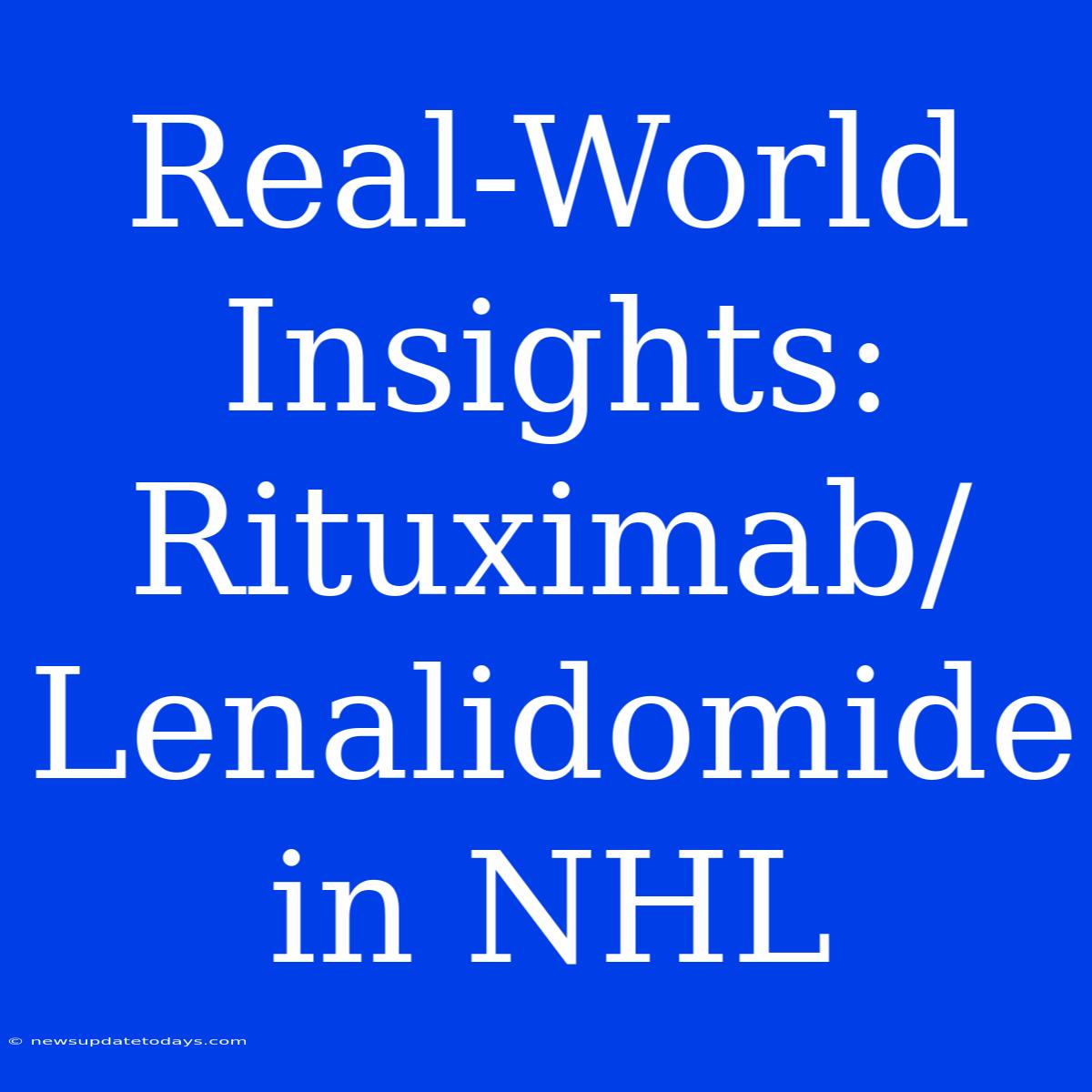Real-World Insights: Rituximab/Lenalidomide in NHL
Rituximab in combination with lenalidomide has emerged as a significant treatment option for Non-Hodgkin Lymphoma (NHL), particularly in relapsed or refractory settings. While clinical trials provide crucial data, real-world insights offer a more nuanced understanding of the treatment's efficacy and challenges in diverse patient populations. This article explores real-world data on Rituximab/Lenalidomide in NHL, focusing on effectiveness, safety, and practical considerations.
Effectiveness in Diverse NHL Subtypes
Real-world studies suggest that the Rituximab/Lenalidomide combination demonstrates efficacy across various NHL subtypes. However, response rates and long-term outcomes can vary depending on factors like:
- Disease Stage: Patients with advanced-stage NHL may experience different responses compared to those with early-stage disease. Real-world data helps to clarify these nuances.
- Prior Treatment Lines: The number and type of previous therapies significantly influence the effectiveness of Rituximab/Lenalidomide. Patients who have received multiple prior regimens might show lower response rates.
- Specific NHL Subtype: While generally effective, the response rate may differ across various NHL subtypes such as diffuse large B-cell lymphoma (DLBCL), follicular lymphoma (FL), and mantle cell lymphoma (MCL). Real-world data allows for a more granular analysis of effectiveness across subtypes.
Further Research Needed: More detailed real-world studies are needed to pinpoint the precise effectiveness of this combination therapy across the spectrum of NHL subtypes and patient characteristics.
Safety Profile and Management of Adverse Events
The combination therapy, while effective, carries potential side effects. Real-world data provides valuable insights into the frequency and management of these adverse events:
- Hematological Toxicities: Myelosuppression (decreased blood cell counts) is a common concern. Real-world studies help identify risk factors and optimal strategies for managing these toxicities, including dose adjustments and supportive care.
- Infusion Reactions: Rituximab infusions can cause allergic reactions. Real-world experience highlights the importance of pre-medication and close monitoring during infusions.
- Other Adverse Effects: Fatigue, nausea, diarrhea, and skin rashes are other reported adverse events. Real-world data allows for a better understanding of the incidence and severity of these effects.
Importance of Monitoring: Close monitoring of patients receiving Rituximab/Lenalidomide is crucial to detect and manage adverse events promptly, improving patient safety and treatment outcomes.
Practical Considerations in Real-World Settings
Real-world application of Rituximab/Lenalidomide presents several practical considerations:
- Access and Affordability: The cost of this combination therapy can be a significant barrier for some patients. Real-world data can help inform healthcare policy and resource allocation.
- Treatment Duration: Optimal treatment duration remains a subject of ongoing investigation. Real-world studies contribute to the evidence base for determining appropriate treatment length.
- Patient Selection: Identifying ideal candidates for this therapy is crucial. Real-world data can help refine patient selection criteria, improving treatment outcomes and reducing unnecessary side effects.
Conclusion: Bridging the Gap Between Clinical Trials and Clinical Practice
Real-world data plays a critical role in bridging the gap between clinical trial findings and the everyday practice of treating NHL. By analyzing the real-world experience with Rituximab/Lenalidomide, we can gain a more complete understanding of its efficacy, safety, and practical implications. Further research focusing on real-world outcomes is needed to refine treatment strategies and improve the lives of patients with NHL. This will enable clinicians to make informed decisions, optimize treatment plans, and ultimately provide better care for individuals battling this complex disease.

